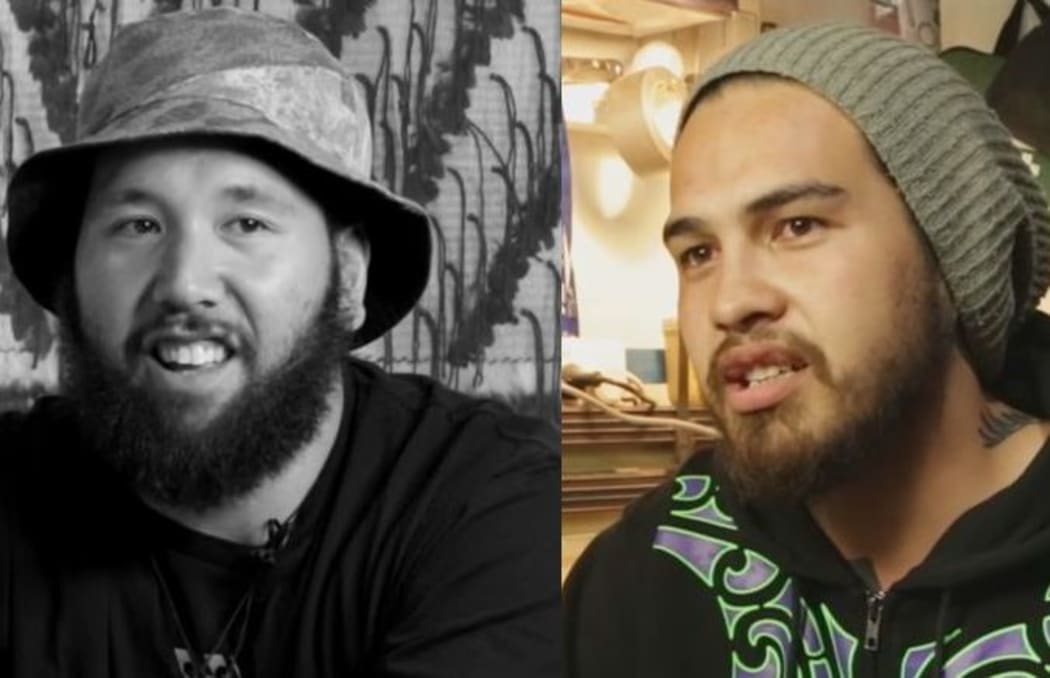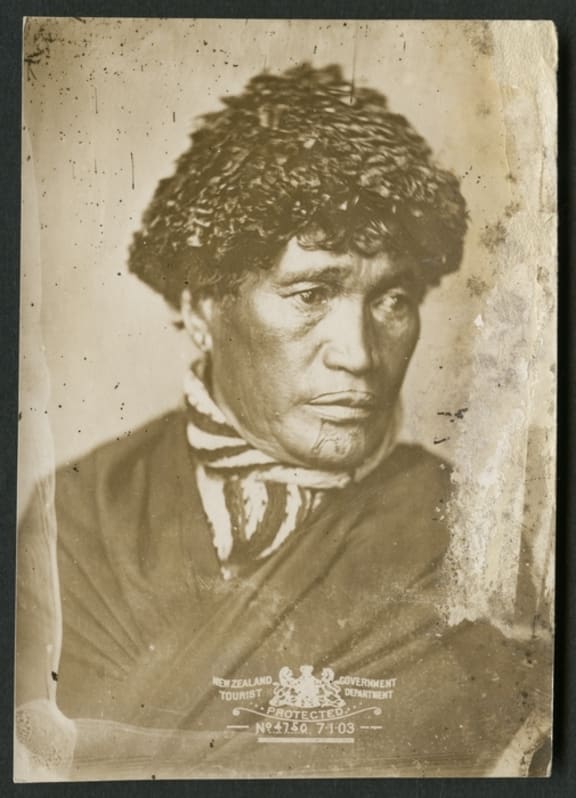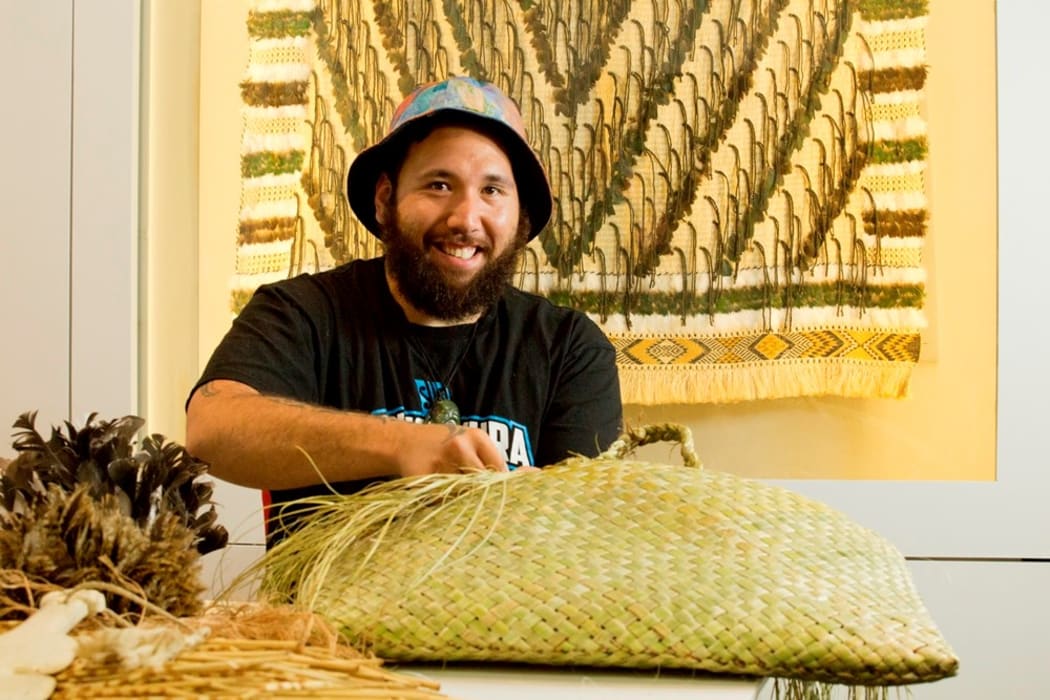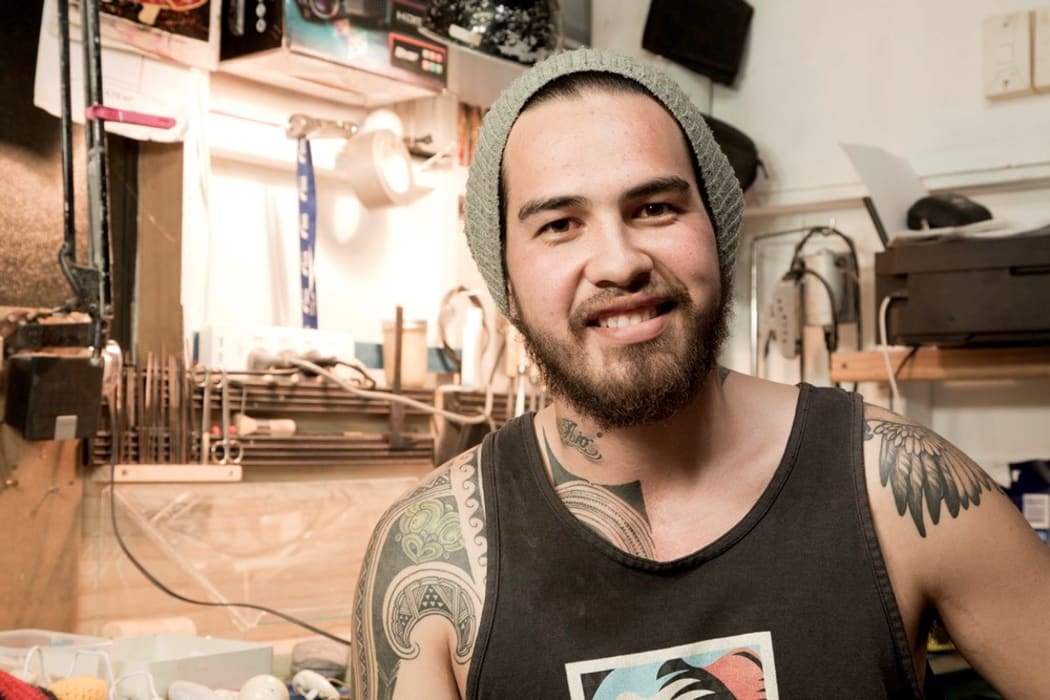
Cory Marsters and Te Kanawa Ngarotata Photo: Te Waka Toi
When most other intermediate school pupils were learning art or woodwork, Cori Marsters was learning weaving from his nannies. It wasn’t then an art form to Cori, just part of everyday life.
“We never ever thought we were doing art. There was always someone who needed a basket to go to the beach or someone needed a basket for their shopping or something like that.”
When Te Kanawa Ngarotata was a child he took an immediate liking to kapa haka, but for a while was weighing up a career in law.
“I attended Waikato University for three years where I was studying Law and Maori. [Then] I figured it wasn’t the law studies that was keeping me up and waking me up in the morning – it was art. So I had to go and take a shot.”
Cori and Te Kanawa are the winners of this year's Ngā Manu Pīrere Awards (formerly Te Waka Toi scholarships).

Portrait of unidentified Maori widow with moko kaauae wearing a potae taua. Ref: PA2-1227. Photo: Alexander Turnbull Library, Wellington, New Zealand
Cori Marsters (Te Arawa, Whakatohea, Kuki Airani) is studying a Bachelor of Māori Arts and is researching potae taua – the traditional Māori headdresses often worn to signify a particular occasion.
Cori argues 'potae taua' is a generic term and not much is known about these intricate hats made of muka (fibres from flax) and feathers, other than what pākeha authors have written. He hopes to discover research from a Māori perspective, and has made many trips to museums around the country and talked to families whose descendants wore 'potae taua'.

Cori Marsters graduated from Carving School at MACI in 2015. Photo: Te Waka Toi
After leaving Rotorua Boys High School a few years ago, Cori had intended to take up a career in conservation – perhaps that tied in well with his childhood spent harvesting flax in the Pā Harakeke – but as the descendant of a long line of carvers, he was pushed towards taking up the chisel. He enrolled at the carving school at the New Zealand Māori Arts and Crafts Institute in Rotorua and graduated as a Pokairua in Whakairo Rakau in 2013. In 2014 he won the Iti Waewae (emerging Māori artist) award.
Born and raised in Rotorua, media-shy Cori says his work is about acknowledging his ancestors.
“I used to go around following my nan, and she used to have weaving friends. We’d go to different people’s home... We never thought we were doing art, it was if someone needed a basket to go to the beach or for their shopping.”
Te Kanawa Ngarotata (Ngāti Pōrou, Ngāti Maniapoto) has lead something of a transient life over the past decade. He was born and raised in Takapau and attended Kura Kauapapa. From there his family moved to Auckland where he was a pupil at Te Wharekura o Hoani Waititi.
Afterwards he studied Law and te reo Māori at The University of Waikato. Not quite finishing his law studies, Te Kanawa felt the pull of the arts and moved to Gisborne to study at Toihoukura.

Te Kanawa says as an artist the toughtest part is being away from whanau. Photo: Te Waka Toi
“I have had a fascination with all Māori art, always being at the marae. Kapahaka is another place that is pretty acitive, all forms of Māori art are present at that time. You have whakairo, taa moko, put aa moko, raranga, taniko, tāonga puoro, whaikōrero, I suppose it was inevitable that I was gonna take this pathway.”
Last year Te Kanawa graduated with a Bachelor of Māori Visual Arts and is now doing an apprenticeship with taa moko artist, sculptor and carver Rangi Kipa.
As an exponent of Whare Tu Taua (traditional Māori weaponry) and a former member of Te Waka Huia, Te Kanawa is committed to exploring and expressing all forms of art. He takes inspiration from the words of the late Ngapo Wehi.
Ki te waatea te hinengaro, me te pai te rere o te wairua, ka taea nga mea katoa.
If your thoughts are free and your spirit flows freely, you can achieve anything.
In recent months, taa moko made headlines when Patrick Salmon received taa moko on his chin which looks like moko kauae (the chin taa moko usually for women). Te Kanawa says that the male facial moko part of the design is pu kauae and in old times the Mataora would be done in stages.
"I suppose he (Patrick) is going through different stages in his life.... for now it’s a pu kauae”.
He says any debate or conversation about Māori arts is healthy.
“It’s going to be a touchy subject, our arts being exposed in a commercial platform... I think it’s good because it’s creating conversation, it's alive.”

